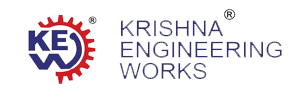Flexo = Cheaper, faster setup, more flexible substrates.
Rotogravure = Superior quality, expensive tooling, best for high-volume premium packaging.
Flexographic printing machine (Flexo) and Rotogravure (Gravure) printing are the two dominant technologies in packaging and converting.
Here is the full side-by-side comparison covering print quality, cost, inks, speeds, substrates, applications, maintenance, and decision guidance.
1. Core Printing Technology
Flexo
- Flexible photopolymer plate
- Image is raised
- Ink transferred via anilox roller → plate → substrate
Rotogravure
- Engraved metal cylinder
- Image is recessed (cells)
- Ink pulled from cells → substrate through pressure
2. Print Quality Comparison
| Parameter | Flexo | Rotogravure |
|---|---|---|
| Fine details | Good | Excellent |
| Gradients & halftones | Very good with HD plates | Superior / photographic |
| Ink density | Moderate | High, rich, deep |
| Consistency | Good | Exceptional for long runs |
| Dot gain | Present | Minimal |
Winner: Rotogravure for premium packaging films.
3. Speed & Production Efficiency
- Flexo: 350–550 m/min
- Rotogravure: 600–800+ m/min
Winner: Rotogravure (best for continuous mass production)
4. Cost & Setup
Flexo
- Low plate cost
- Cheaper for short/medium runs
- Quick job changeovers
Rotogravure
- High cylinder engraving cost
- Best ROI only for large volumes
- Longer setup time
Winner: Flexo (short runs) / Rotogravure (long runs)
5. Substrate Compatibility
| Substrate Type | Flexo | Gravure |
|---|---|---|
| Paper | ✔ Excellent | ✔ Good |
| Corrugated | ✔ Best choice | ✖ Not suitable |
| Films (PET/BOPP/CPP) | ✔ Good | ✔ Excellent |
| Foil | ✔ Good | ✔ Excellent |
| Kraft | ✔ Excellent | ✖ Limited |
| Labels | ✔ Best | ✔ Good |
Winner: Flexo = More versatile
Gravure = Best for premium films
6. Ink Systems
Flexo
- Water-based
- UV-curable
- Solvent-based
- Eco-friendly & low VOC options
Rotogravure
- Mostly solvent-based
- High evaporation rate
- Excellent for metallic/speciality inks
Winner: Flexo for environmental compliance
Gravure for specialized high-density inks
7. Image Reproduction
| Feature | Flexo | Gravure |
|---|---|---|
| Photographic images | Good | Excellent |
| Metallic colors | Good | Excellent |
| Large solid areas | Very good | Exceptional |
| Fine text | Good | Excellent |
| Color consistency | Good | Near-perfect |
Winner: Rotogravure
8. Operational & Maintenance Factors
Flexo
- Easy cleaning
- Lower maintenance cost
- Plates wear faster over time
Gravure
- Cylinders last extremely long
- Harder to clean
- Higher maintenance requirements
9. Best Applications
Flexo Works Best For
- Labels & stickers
- Paper bags
- Tissue & hygiene products
- Corrugated packaging
- Medium-run flexible packaging
- Short-run promotions
Rotogravure Works Best For
- High-volume flexible packaging
- FMCG snacks & confectionery
- Premium laminate films
- Pharmaceutical packaging
- Large-area image printing
- Consistent million-meter runs
10. Decision Matrix (Fast Guide for Buyers)
| If You Need… | Choose Flexo | Choose Rotogravure |
|---|---|---|
| Lower startup cost | ✔ | ✖ |
| Short-run jobs | ✔ | ✖ |
| Fast changeovers | ✔ | ✖ |
| Eco-friendly inks | ✔ | ✖ |
| Premium print quality | ✖ | ✔ |
| Photographic detail | ✖ | ✔ |
| High-volume printing | ✖ | ✔ |
| Consistent color across millions of meters | ✖ | ✔ |
11. Summary Table
| Category | Flexographic (Flexo) Printing | Rotogravure (Gravure) Printing |
|---|---|---|
| Printing Method | Raised polymer plates | Recessed engraved cylinders |
| Quality | High | Superior |
| Detail & Halftones | Very good | Best in industry |
| Ink Type | Water, UV, Solvent | Mostly solvent |
| Environmental Impact | Lower | Higher |
| Tooling Cost | Low | High |
| Setup Time | Fast | Slow |
| Ideal Run Length | Short–Medium | Long–Very Long |
| Speed | High | Very High |
| Substrate Range | Wide | Moderate |
| Substrate Strength | Best for paper/corrugated | Best for films/foils |
| Color Consistency | Good | Excellent |
| Maintenance | Low | High |
| Application | Labels, paper, corrugated | Flexible films, FMCG packaging |
